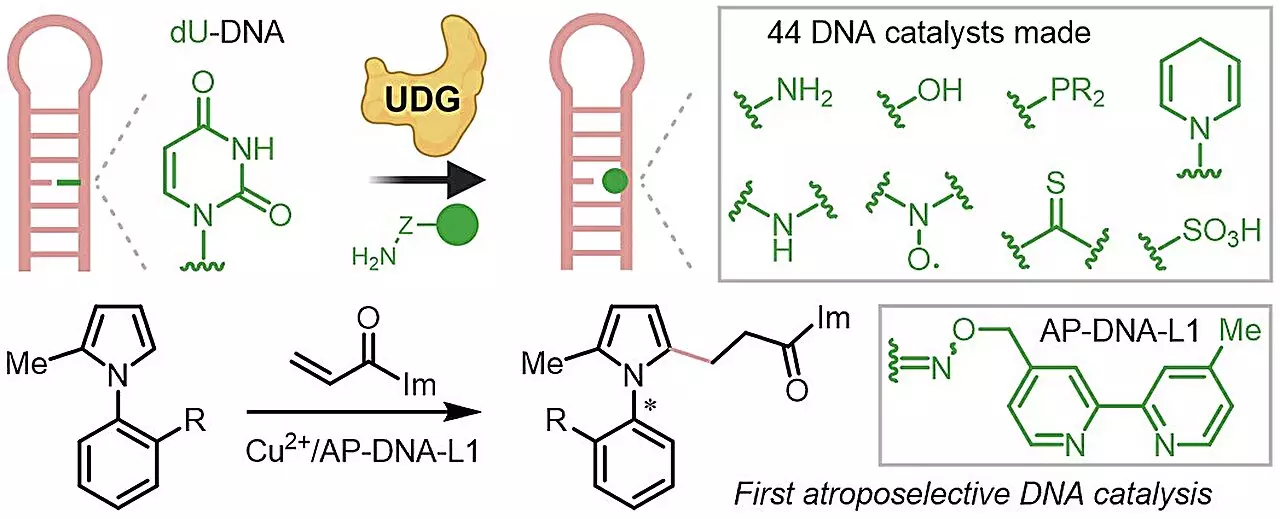In the realm of chemistry, the quest for chiral molecules remains significant due to their importance in pharmaceuticals and material science. Traditionally, enzyme catalysis has been looked to for the synthesis of these complex molecules. While enzymes—biological proteins responsible for speeding up chemical reactions—offer a sustainable solution, they come with a host of challenges. Their inherent instability and the difficulties associated with designing them through careful DNA manipulation have hampered their practical application.
In this context, chemists are now exploring the potential of DNA not just as a biological molecule but as a robust and financially viable chiral scaffold. DNA’s characteristically stable structure, paired with its highly programmable nature due to base-pairing rules, presents an ideal alternative for developing catalysts that can facilitate asymmetric synthesis.
Introducing DNA Catalysts: A New Methodology
A team of researchers at the National University of Singapore (NUS), spearheaded by Assistant Professor Zhu Ru-Yi, is revolutionizing how we think about chiral catalysts. By harnessing the process of DNA repair and marrying it with concepts from biorthogonal chemistry, they have unveiled a straightforward method for creating diverse chiral DNA catalysts. This novel approach not only simplifies the production process but also opens the door for non-specialists to engage in DNA catalysis without the need for sophisticated instruments or expert know-how.
Biorthogonal chemistry, central to this new methodology, allows chemical reactions to occur without interacting with other biological functions. This characteristic ensures compatibility with an array of functional groups, thus enhancing the versatility of the produced catalysts.
Innovative Outcomes and Future Directions
The results of this trailblazing research were documented in the Journal of the American Chemical Society, where the NUS team showcased a library of 44 newly developed DNA catalysts. These catalysts exhibited superior performance metrics compared to their predecessors in terms of enantioselectivity, the range of applicable substrates, and overall reaction efficiency.
Perhaps the most groundbreaking aspect of their findings was the successful demonstration of atroposelective DNA catalysis, which allowed for the synthesis of axil chiral compounds that typically elude traditional biocatalysis methods. This achievement marks a significant milestone, proving that DNA can effectively extend the capabilities within the field of asymmetric synthesis.
The flexibility of their methodology – allowing for the creation of structurally diverse catalysts with unprotected functional groups – underscores the method’s robustness. Looking to the horizon, the NUS research team is poised to further explore new strategies targeted at refining selective and sustainable chemical reactions through DNA catalysis. This ongoing quest not only promises to enrich the field of asymmetric synthesis but could also lead to more eco-friendly practices in chemical production, enhancing both efficiency and sustainability.
The innovative efforts at NUS signify a major leap towards reimagining the role of DNA in catalysis, heralding a future where DNA is integral to sustainable chemical processes.


Leave a Reply